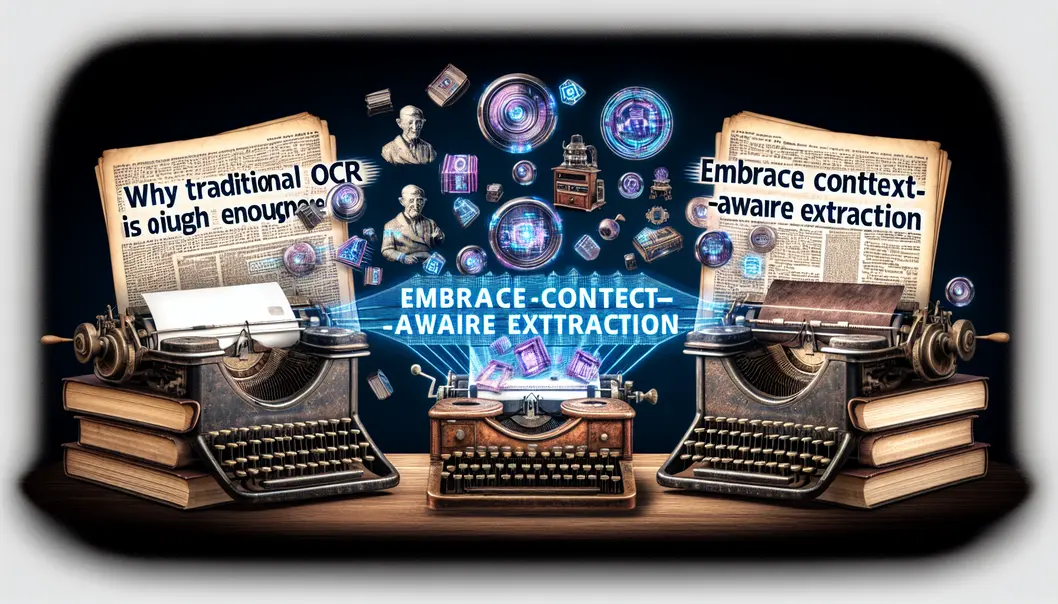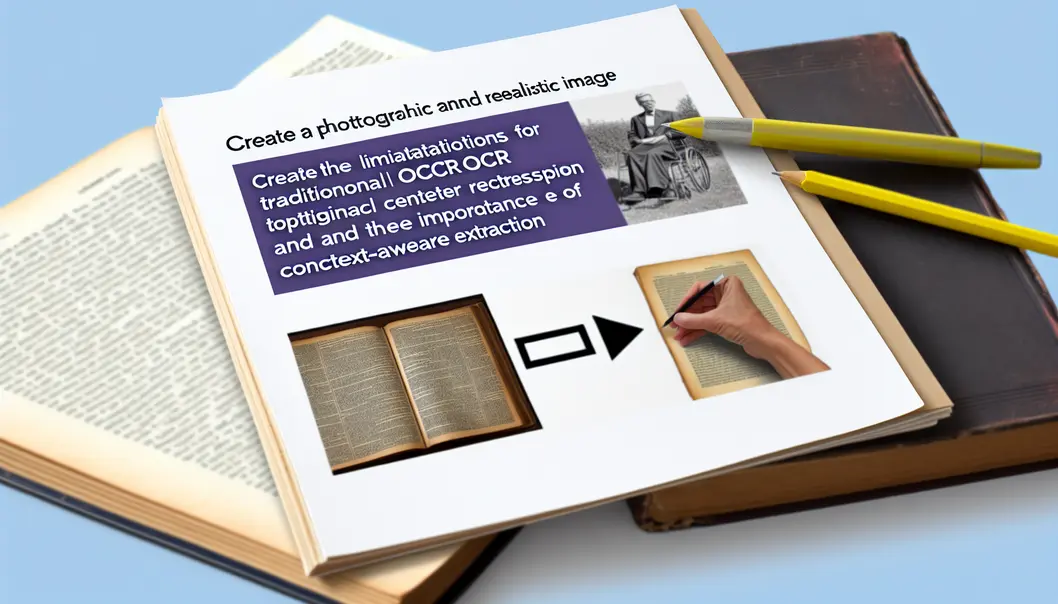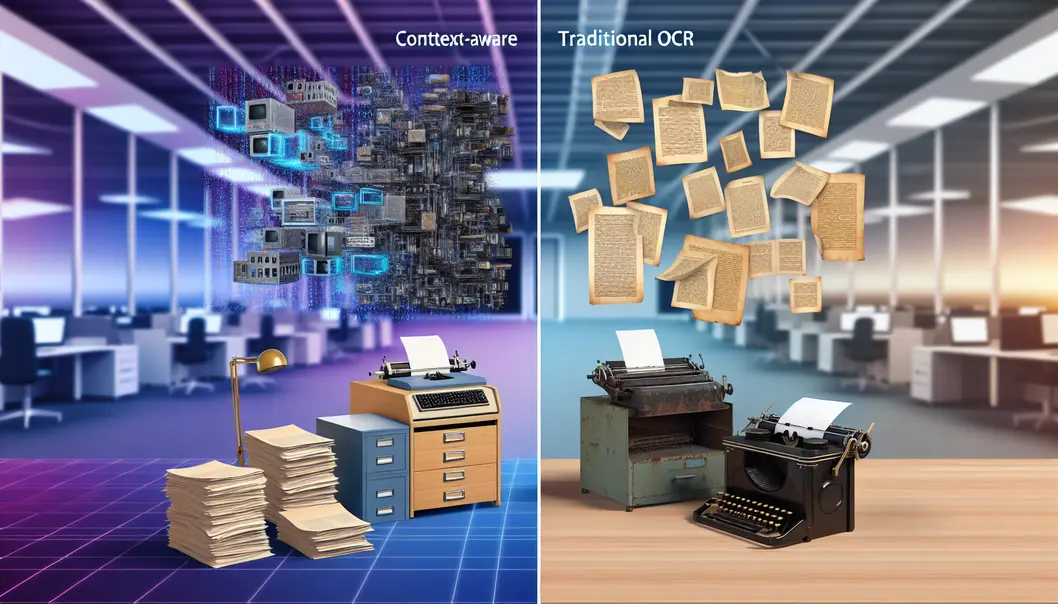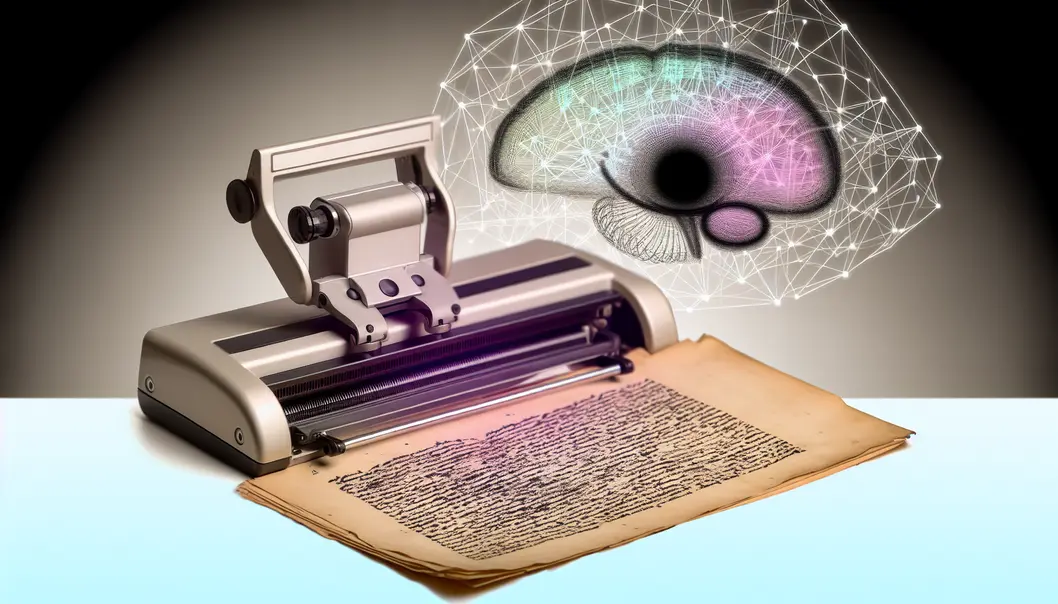As business environments grow more complex, the inadequacies of traditional OCR have become apparent. These systems struggle with nuanced, unstructured data, failing to grasp document context and layout intricacies. This gap is filled by modern, context-aware extraction technologies powered by NLP, offering enhanced accuracy and efficiency. We delve into these innovations, examining their impact on document processing and why they are indispensable for modern enterprises.
Decoding the Boundaries of Traditional OCR in the Age of NLP Enhancement

Traditional Optical Character Recognition (OCR) technology has been a pivotal tool in document processing, revolutionizing the way physical text is transformed into digital formats. However, as the landscape of data processing advances, the inherent limitations of traditional OCR become evident, especially when juxtaposed with more sophisticated NLP-driven extraction methods. These limitations are not just mechanical constraints but are tied to the evolving needs for contextual and semantic understanding in data processing.
One of the most significant drawbacks of traditional OCR is its inability to handle unstructured data proficiently. Documents featuring complex layouts, such as tables and charts, or even handwritten text, pose substantial challenges. This is particularly problematic in sectors like healthcare, where critical information is often presented in unstructured formats. Traditional OCR’s inability to interpret these documents accurately can lead to significant errors in data processing, highlighting a gap that NLP technologies are designed to bridge.
Additionally, traditional OCR operates on a surface level, extracting text without understanding its context within a document. This lack of contextual insight means that while OCR can convert text, it struggles to extract meaningful information or understand relationships between data points. In contrast, NLP-driven technologies incorporate semantic analysis, enabling a deeper understanding of document content, and facilitating more accurate information retrieval.
Moreover, the effectiveness of traditional OCR is heavily contingent on image quality. Low-resolution scans or text within degraded images can severely compromise accuracy. This dependency on high-quality images restricts OCR’s applicability, especially in environments where optimal conditions are not guaranteed. NLP-driven extraction technologies can mitigate these issues through enhanced image processing techniques, improving recognition even under suboptimal conditions.
Traditional OCR also faces challenges with language and script diversity. While typically optimized for specific languages, these systems fall short when dealing with less common scripts. NLP models offer a broader linguistic range, increasing versatility and utility across different languages.
In light of these challenges, the emergence and integration of AI and NLP-driven extraction methods provide a promising solution. These technologies not only address the outlined limitations but also enhance processing speeds and efficiencies. The transition towards such advanced methods marks a necessary evolution, aiming to meet the intricate demands of modern data environments. For more insights on document processing evolution, explore our blog section.
The Paradigm Shift in Document Processing: Embracing Context-Awareness with NLP

The landscape of document processing has transformed remarkably, evolving from the rigid frameworks of Optical Character Recognition (OCR) to the sophisticated, context-aware systems powered by Natural Language Processing (NLP). At the heart of this evolution is the integration of Artificial Intelligence (AI), machine learning, and deep learning technologies, which have exponentially broadened our capacity for document analysis.
In its nascent stages, OCR technology was laboriously codified, relying heavily on handcrafted rules typical of the early 20th century. This initial reliance on static rules rendered OCR efficient only for straightforward text extraction from printed documents. However, as business processes and document structures became increasingly intricate, the need for more advanced solutions became glaring. Traditional OCR struggled with the unstructured nature of modern documents, often producing subpar output when faced with complex layouts such as tables, charts, and graphics.
The advent of machine learning has extended the capabilities of OCR, introducing algorithms like Convolutional Neural Networks (CNNs), Recurrent Neural Networks (RNNs), and Transformers. These innovations have allowed OCR to grasp printed, handwritten, and even scene text with a higher degree of accuracy, quintupling its potency as a document processing tool. Yet, even these advancements highlighted a significant void—context comprehension, which traditional OCR could not adequately fill.
Enter Intelligent Document Processing (IDP), a leap beyond traditional OCR, harnessing the synergistic power of AI and machine learning not only to read but also to interpret documents. When IDP integrates with NLP, it transforms document processing through contextual awareness. NLP delves into the semantics and nuances of language, enabling systems to engage in in-depth analyses of extracted text. Tasks such as data extraction, document classification, and automated decision-making become feasible and highly efficient, as systems recognize the intent and substance within documents.
The practical applications of these context-aware technologies are vast. For instance, NLP can meticulously extract precise data points within documents, aiding in seamless data aggregation. Moreover, with NLP-enhanced IDP, document classification becomes an intuitive process, allowing for the efficient organization and retrieval of information. Not only does this streamline business processes, but it also facilitates automated decision-making by understanding and leveraging the context of documents.
Looking forward, the fusion of computer vision with NLP is poised to escalate the proficiency and acuity of document analysis. Nonetheless, challenges persist, particularly in the areas of document format variety, data privacy concerns, and accuracy for degraded documents. Addressing these obstacles is critical for broad-scale adoption and the continual evolution of these advanced document processing technologies.
For more information on advanced document processing solutions and their implementation, visit DocExtractor.
Enhancing Precision and Speed: The Revolution of NLP in Document Extraction

Natural Language Processing (NLP) has transformed the landscape of document extraction through its ability to enhance both accuracy and efficiency. Within the realm of Intelligent Document Processing (IDP) systems, NLP serves as a catalyst that elevates conventional OCR capabilities into a sophisticated, automated, and intelligent process.
Enhanced Accuracy with Contextual Understanding
The power of NLP lies in its ability to understand not just the text, but its context and meaning, an ability traditional OCR systems lack. By distinguishing between similar terms used in varied contexts, such as identifying ‘date’ on an invoice versus a contract, NLP reduces errors that simple pattern recognition might introduce. For organizations dealing with unstructured data, such as financial reports or healthcare records, NLP stands out by parsing complex layouts and recognizing relationships between data points, such as invoice line items. This translates into accuracy rates that can exceed 90% in practical applications, a significant improvement over traditional OCR approaches.
Handling Unstructured and Handwritten Data
Traditional OCR often stumbles when faced with unstructured or semi-structured documents. Here, NLP excels by using algorithms to understand complex document layouts, even deciphering handwritten notes through Intelligent Character Recognition (ICR). This ability to manage diverse data formats ensures that organizations maintain high accuracy in their document handling.
Scaling Efficiency with Automation
NLP-driven automation significantly streamlines document workflows, from ingestion to classification, data extraction, and beyond. This reduces the need for manual intervention in routine tasks, such as invoice sorting or form data extraction, saving considerable time. These efficiencies are crucial in high-volume settings like financial services, where speed and accuracy are essential. Moreover, NLP systems adapt seamlessly to different formats—PDFs, scanned images—facilitating operations without the need for custom templates.
Real-Time Processing and Validation
The capability to process information in real-time offers a major efficiency boost. NLP-driven systems validate data instantaneously, for example, checking an extracted date against acceptable ranges or ensuring names align with database records. This eliminates manual verification bottlenecks, allowing information to flow quickly to downstream applications.
Thus, the integration of NLP into document processing not only improves accuracy and reduces operational costs but also offers scalability. By continuously learning from feedback, NLP systems promise ongoing improvements to better meet the demands of modern data-driven environments. Organizations venturing into this transformative space can explore more at DocExtractor’s comprehensive blog, which details the nuances and advancements in document extraction technologies.
Final thoughts
The shift to NLP-driven document extraction meets modern business needs, providing accuracy and processing efficiency formerly unattainable.
Would you like to know how to Transform Your Organisation with AI Mechanised Hyperautomation?
Learn more: https://docextractor.com/contact-us/
About us
At DocExtractor, we leverage advanced AI and machine learning technologies in building tailored solutions to bring automation and intelligence in your operations. Each tool reflects our mission to make AI both accessible and impactful.


Leave a Reply